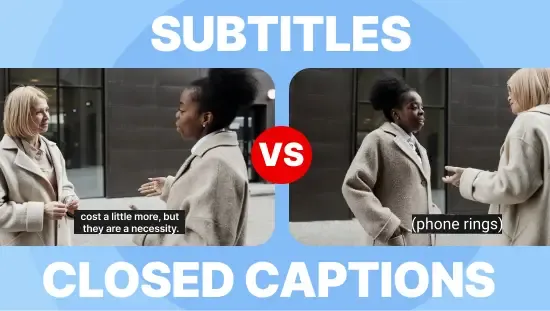How to Summarize a Forensic Interview
October 2025
·
2 min read
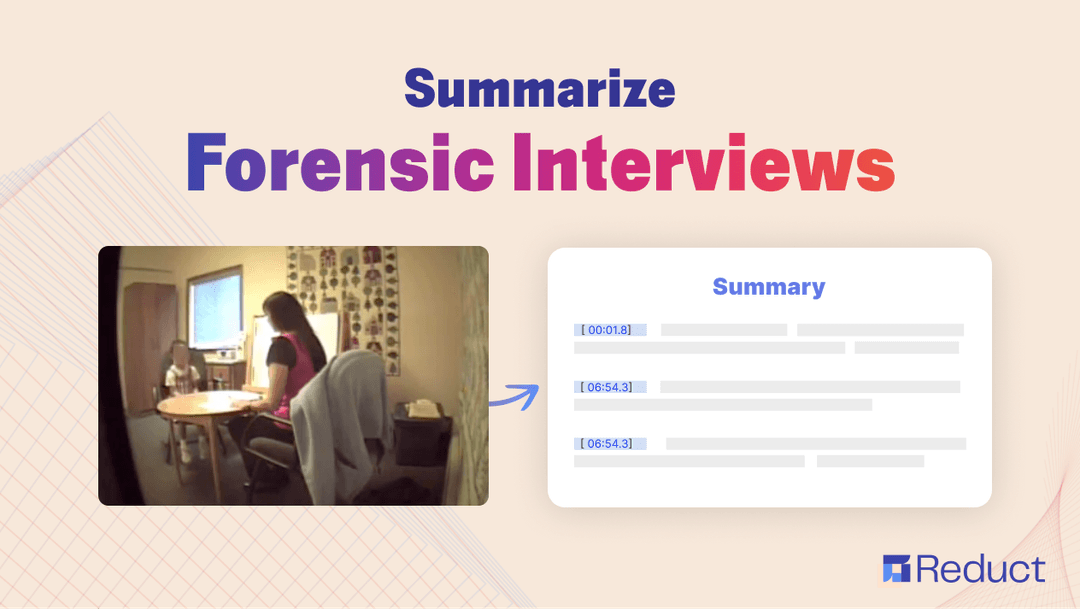
Most forensic interviews come as hours of raw video: a child, a camera, and a record that must be carefully examined for allegations and evidence.
Even with a transcript, you need to review hundreds of lines to piece together what happened and identify corroborating details and leads.
That is why starting with a summary is so powerful. It gives you a head start by:
-
providing context so you understand the nature of the allegations
-
clarifying the complainant's story so you can interpret every detail with that perspective
-
helping you identify who else may need to be interviewed and what steps to take next
Reduct makes that process effortless. It automatically generates forensic interview summaries in thematic, chronological, or custom formats, turning hours of video into a clear roadmap of the case.
Here's a quick walkthrough to creating your first summary in Reduct:
1. Upload your forensic interview recordings
Drag and drop multiple interview recordings into the left-hand side of your project screen, or click Upload to import them from your computer.
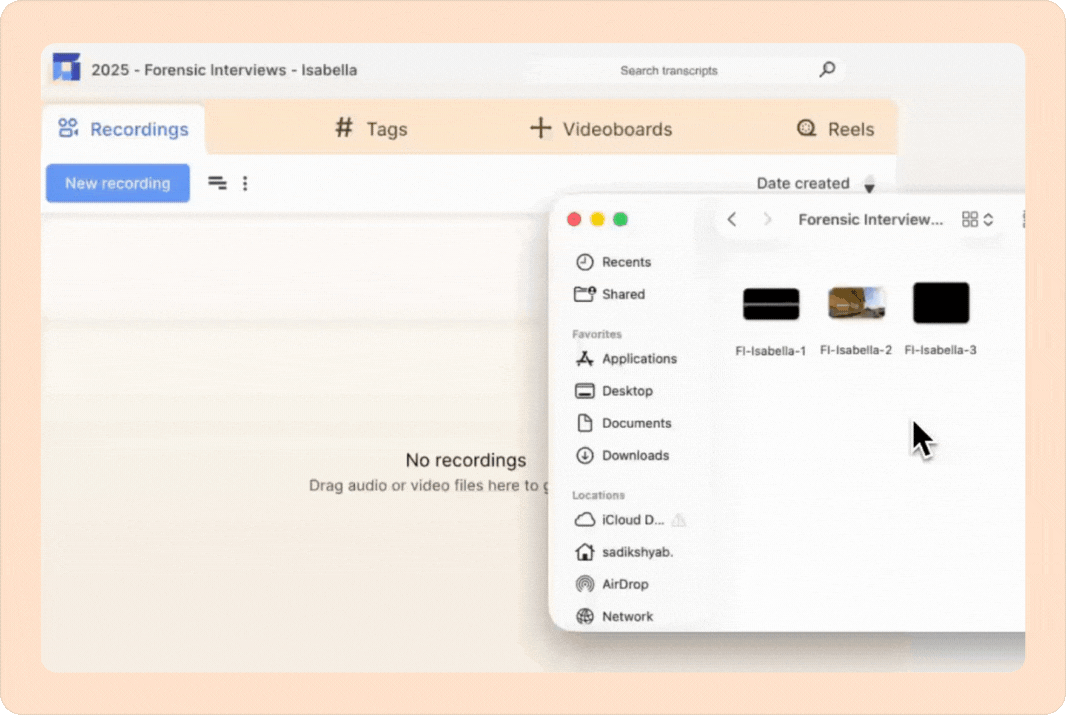
You can also upload recordings directly from Google Drive, Dropbox, or other cloud services by pasting a link.
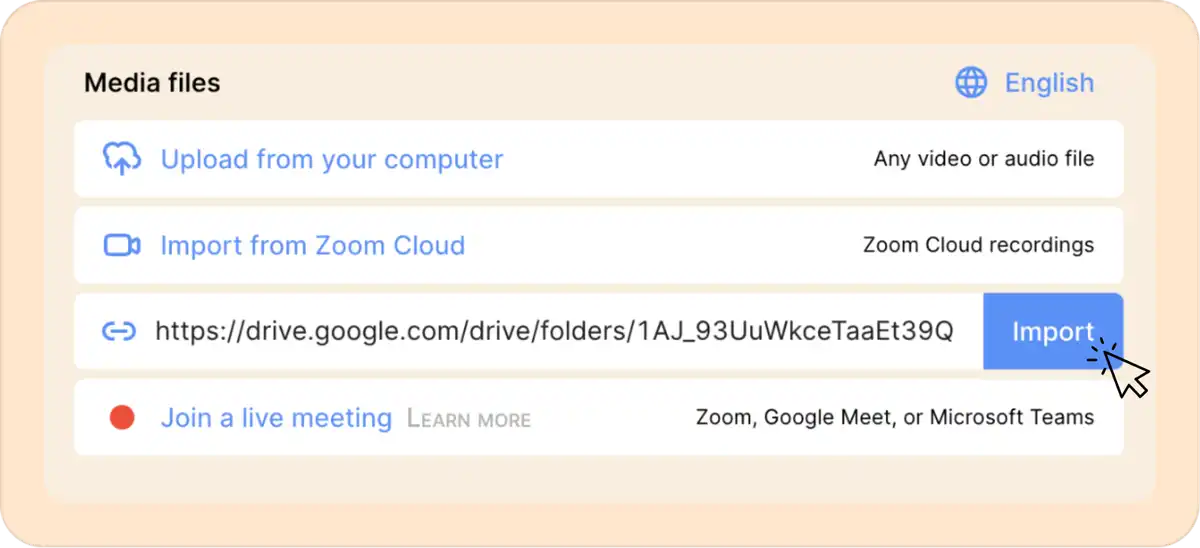
Every forensic interview you upload is automatically transcribed, capturing the complainant's statements verbatim.
English is selected by default, but if you have a non-English-speaking or a bilingual complaining witness, you can select from the 90+ languages supported by Reduct.
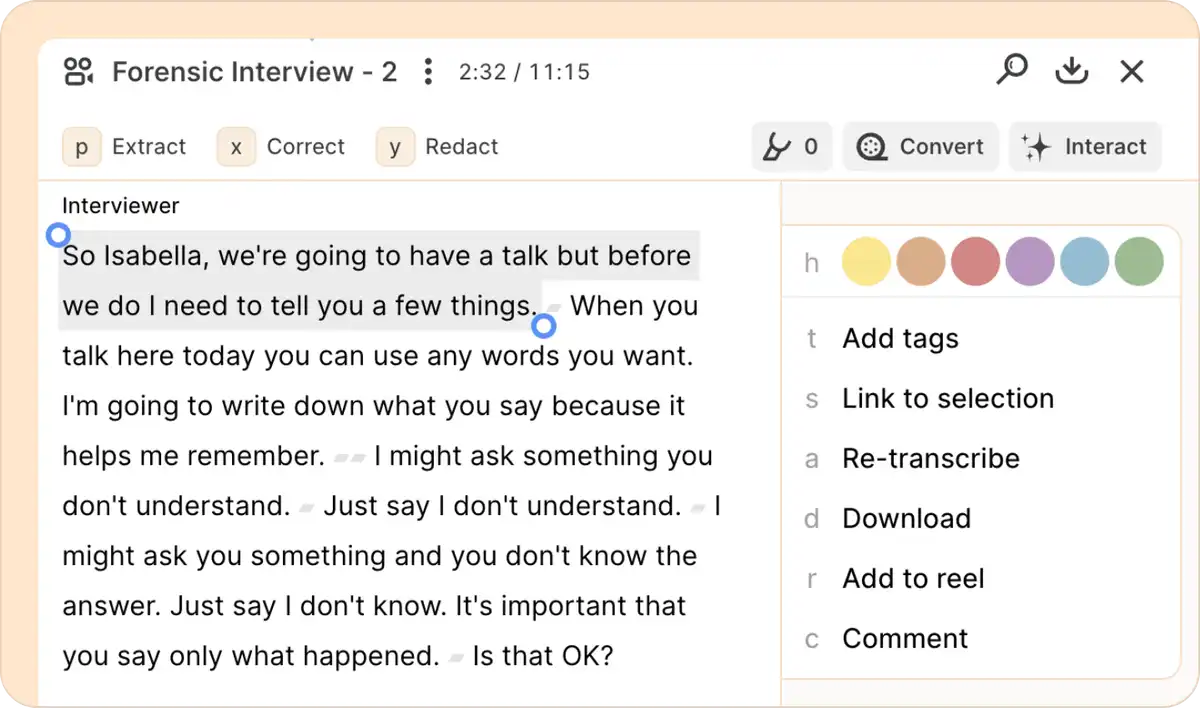
2. Choose the summary type for your interviews
Once your interview is uploaded and transcribed, click the Interact button on the right-hand side to generate a summary that organizes the interview by topic, time, or custom Q&A format.
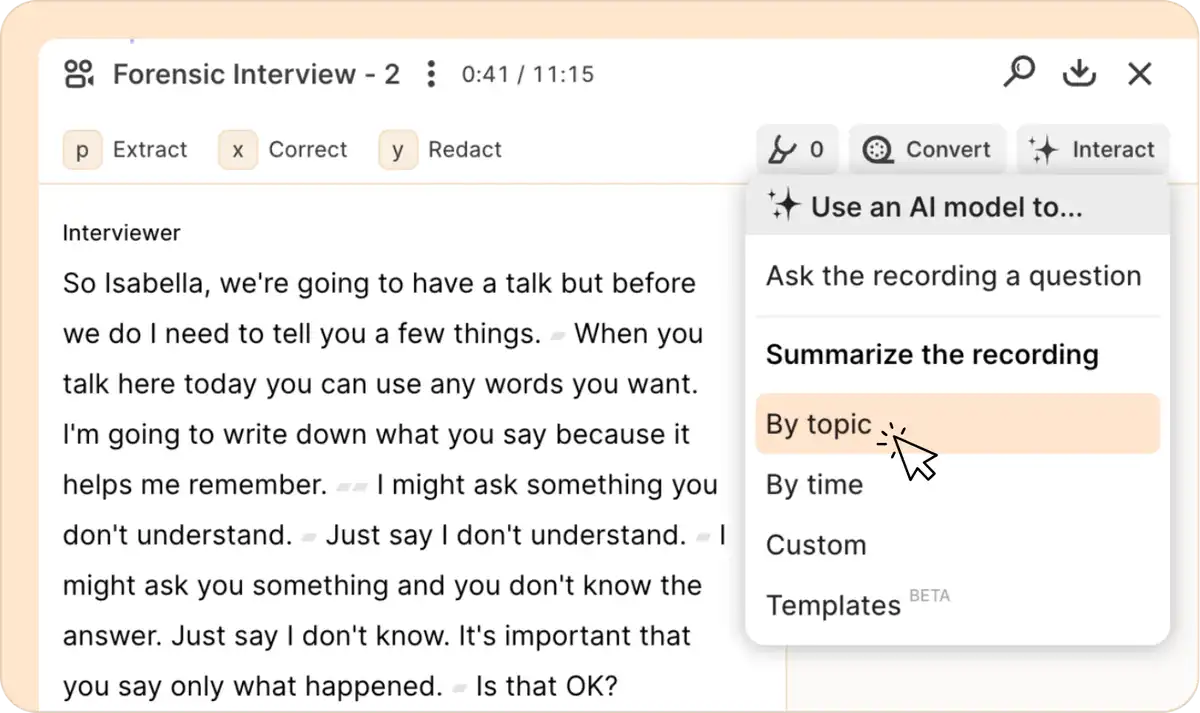
2.1. By topic / thematic
The topic summary groups related statements and themes from the complainant together, surfacing key allegations, patterns, or areas of potential concern.
In the following example, Reduct has identified a range of topics discussed in the interview. You can focus on the crucial points, such as the "arm injury" and the "classroom incident," to quickly understand the main claims and events.

Clickable timestamps (highlighted in blue) let you cross-check each statement against the original interview, ensuring every detail is accurately captured and easy to reference.
2.2. By time / chronological
The chronological summary organizes the interview in the order it occurred, preserving the sequence of events.
It's especially useful for tracking timelines, verifying consistency in the complainant's account, and preparing for cross or follow-up questioning.
Each statement is supported by a timestamp, so you can reference the original interview to confirm details or review the context behind specific claims.

2.3. Custom
With the custom Q&A summary, you can ask targeted questions about the interview and get precise, timestamped answers.

If you want to use the same set of questions for all your forensic interview recordings, just check 'Save custom summary to project.' You can always add, remove, or update questions as needed.
By framing questions around specific allegations, events, or leads, you can quickly extract the information you need before you start your review.
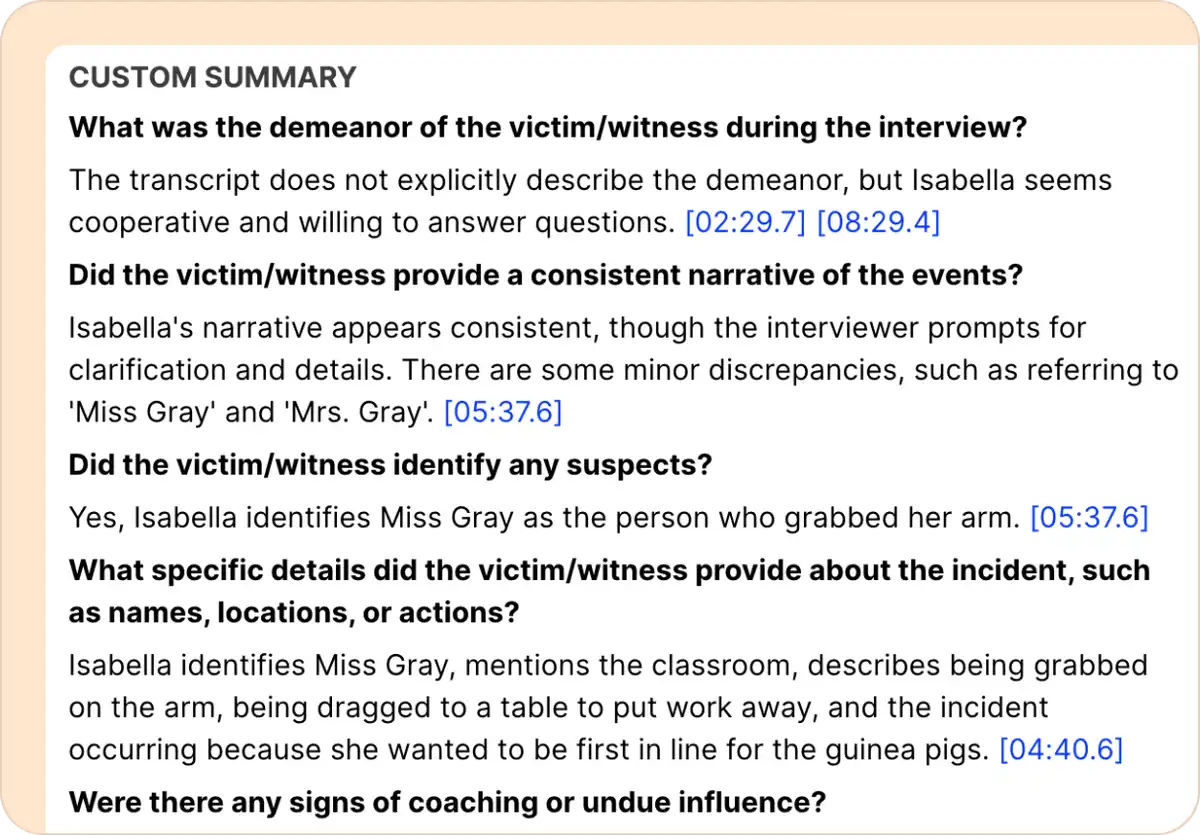
Reduct also provides a set of general template questions for forensic interviews, which you can easily customize to fit each case. To access the templates, go to Interact → Templates → Select a template → Forensic Interview.
If you’re using Reduct for criminal defense and this feature is not available to you, contact us at support@reduct.video.
Pinpoint critical evidence, fast
Forensic interviews hold crucial information, but hours of footage can make it difficult to track timelines, verify statements, and uncover corroborating evidence. Reduct's summary features turn these recordings into a clear, actionable roadmap, highlighting the statements that matter most for your case.
Reduct pinpoints the critical evidence for you, while you interpret how it fits into your defense strategy.


